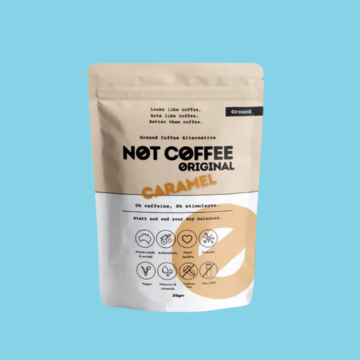Written By  Go Vita
Go Vita
blog

Where are tocotrienols found?
How Do They Work?
Are there any contraindications?
What is the best way to take tocotrienol?
The Benefits of Vitamin E
Next-Level Vitamin E
Are you taking the right type of vitamin E? Discover the power of annatto tocotrienol, the 21st century vitamin E.
Vitamin E’s benefits stem from its ability to act as a powerful protectant against free radicals. As it is fat-soluble, it can penetrate cellular membranes and readily react with harmful oxidising agents. Found in a variety of foods, vitamin E is common to many fatty plant sources, including wheatgerm oil, almond oil, grapeseed oil, and canola oil.
Although the benefits of vitamin E have been well documented over the last century, research efforts have focused primarily on one half of this antioxidant family: alpha-tocopherol. And, despite this vast field of research, newer studies show that alpha-tocopherol is not the most powerful form. Instead, the tocotrienol form expresses a more versatile reactivity, with improved benefits.
Where are tocotrienols found?
Tocotrienols, although less commonly consumed, are naturally found in rice bran, palm, and annatto. Tocotrienols from palm were first commercialised in 1992, followed by rice tocotrienols in 1996, and culminating in the 2002 development of the finest tocotrienol ingredient yet, sourced from annatto.
The annatto plant (Bixa orellana) originates from the Amazon rainforest and has been used since ancient times. The British nicknamed it “the lipstick plant”, because of its use as a natural colourant. Today it is still used in the colouring of butter, cheeses, snacks, fruit fillings, and many other foods.
How Do They Work?
Tocotrienols protect each one of our 37 trillion cells from oxidation (the process in which a cell becomes unstable). Poor diet, smoking and stress are all examples of things that cause oxidation. Over 90 per cent of oxidation protection must come from either tocotrienols or tocopherols. Tocotrienols are the better choice, as they have been shown to provide 40-60 times more protection than tocopherols.
The superior benefits of tocotrienols over tocopherols are supported by numerous studies which illustrate tocotrienols’ ability to reduce the risks associated with cardiovascular disease, metabolic syndrome, diabetes, bone injuries, and cancer – as well as promote skin health. Also, annatto-originated tocotrienols have a distinct advantage in lowering cholesterol and enhancing cellular health, without the interference of tocopherols.
Are there any contraindications?
A crucial concept to grasp when discussing vitamin E is the interference that occurs when we have too much alpha-tocopherol in our system. Alpha-tocopherol is unique because it has an alpha-TTP (alpha-tocopherol transfer protein), as well as the ability to protect LDL from oxidation. Think of the transfer protein as a ‘passport’ that allows alpha-tocopherol to gain admittance and enter the bloodstream. A typical Western diet provides all the alpha-tocopherol we need for it to do this job.
The interference occurs when we have too much alpha-tocopherol in our system (for example, taking alpha-tocopherol as a supplement). Our passageways become filled with these molecules that, because they have the right of way, impede tocotrienols from absorption and entry into the bloodstream. How much alpha-tocopherol is too much? In a healthy diet, it is expected we consume about 10-15 mg of tocopherols per day. Such amounts do not present any interference to tocotrienols.
There are no other known contraindications with tocotrienol outside of alpha-tocopherol. It is synergistic with vitamin C and mixes well with other lipid (fat) nutrients, such as carotenoids, fish oil and CoQ10.
What is the best way to take tocotrienol?
In order to obtain adequate lipid antioxidant protection, a normal healthy person should take 100-200 mg of tocotrienol per day. The recommended dose for a person with a mild chronic condition is 300-450 mg per day, and for a person with an advanced chronic condition, 450-600 mg per day. Clinical trials indicate that the highest dose taken safely for 24 months is 900 mg per day.
As we age, it is important to supplement with annatto tocotrienol, because it is the best known protector of cellular health.
The Benefits of Vitamin E
Glucose control Vitamin E improves glucose balance, and low intakes are linked to an increased risk of type 2 diabetes.
Coronary heart disease Vitamin E prevents circulating fats from oxidation, reduces platelet clumping, and has blood-thinning and anti-inflammatory effects.
Brain function By protecting brain cells from oxidation, high levels of vitamin E are strongly associated with better cognitive scores.
Osteoarthritis A study of people with osteoarthritis found that taking 400 mg of vitamin E for six weeks reduced pain and the need for painkillers.
Cataracts People with the highest dietary intake of vitamin E have a lower risk of developing cataracts.
Information presented is for information purposes only and is not intended to replace advice or treatment from qualified healthcare professionals. The information is not intended to treat or diagnose. Always consult your healthcare professional before taking nutritional or herbal supplements. If you are pregnant, breastfeeding, have any allergies or diagnosed conditions, or are taking prescription medications, always consult your healthcare professional before taking nutritional or herbal supplements.





